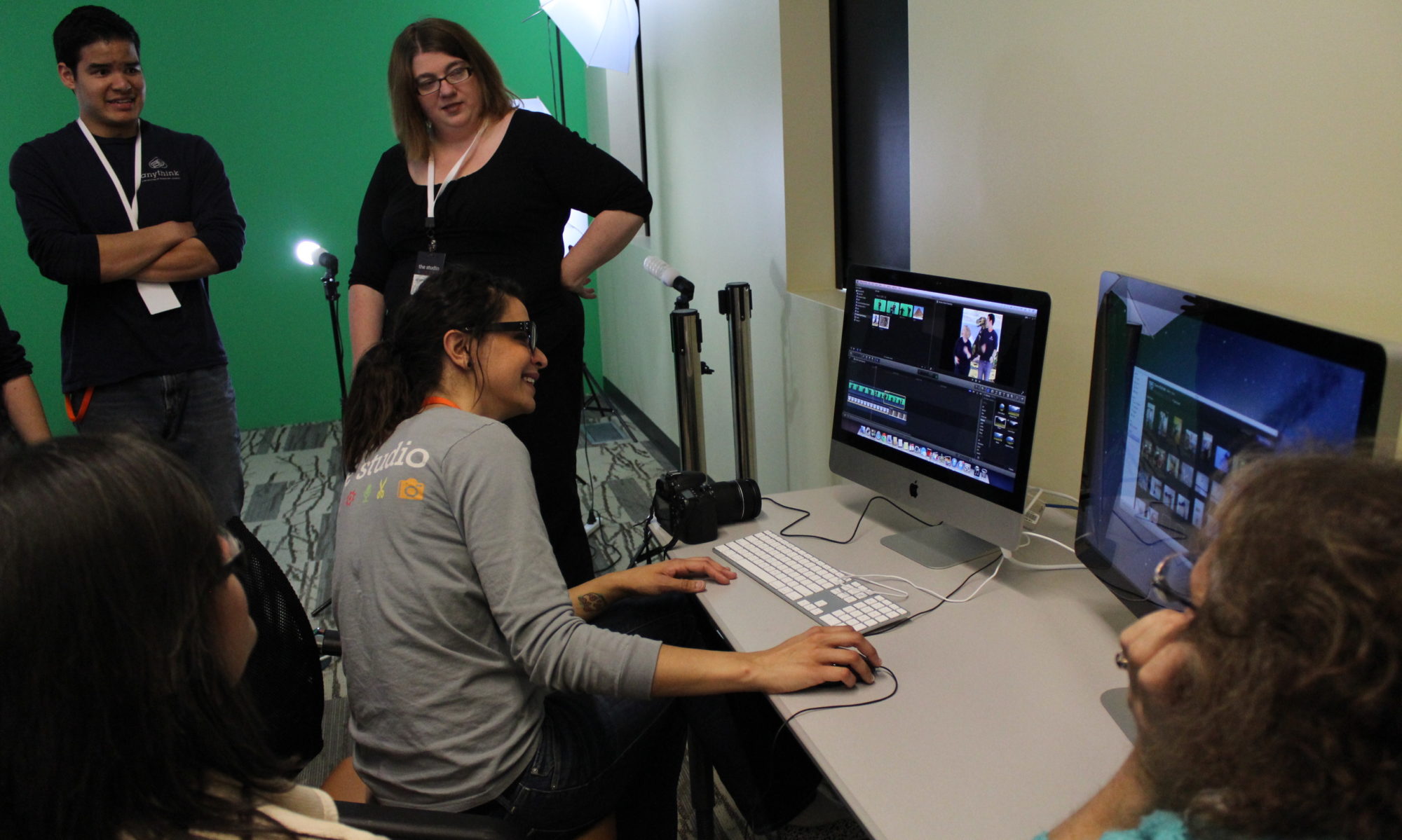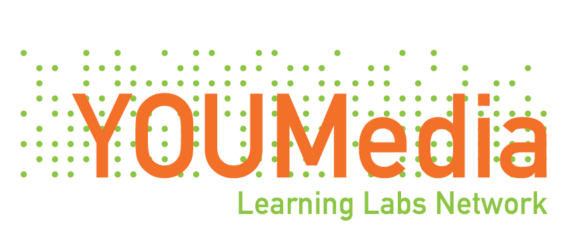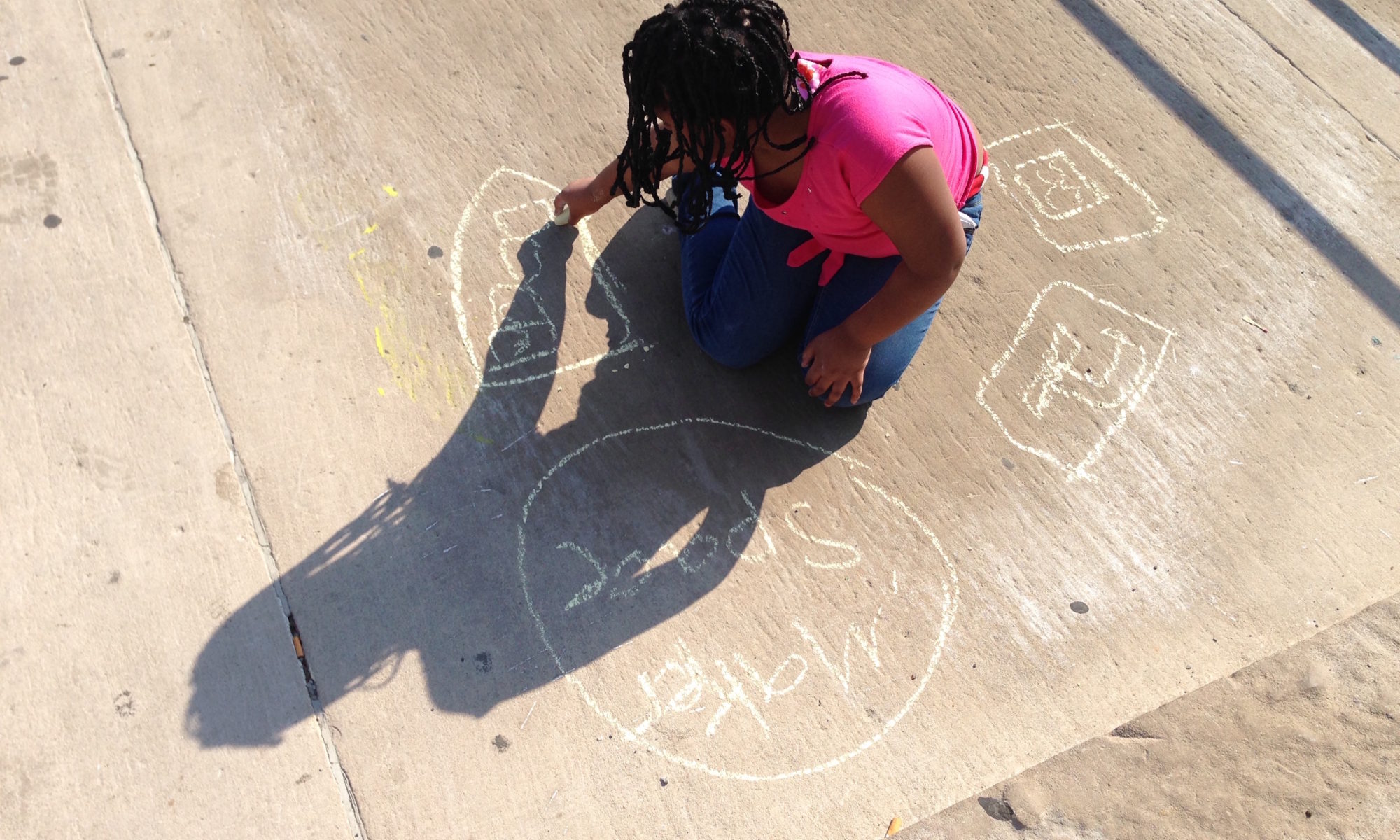By Goda Trakumaite of Maker Jawn @ Free Library of Philadelphia
Three years after Maker Jawn’s inception at the Free Library of Philadelphia, we discovered a lack of clarity when thinking about the mission and values of our work. Our program was funded by a wide range of grants with different goals, took place across 5 sites with different spaces and needs, and faced constant Mentor turnover. How could we re-focus our practice and create clear guiding principles for our work?
In its first three years of existence, Maker Jawn received funding from a wide range of sources, all of which determined the way that we defined ourselves as a program. Starting out as a Maker Ed site, evolving into a LSTA funded project focused on Designing Making and Sharing, and eventually receiving a 3-year IMLS grant for creating multi-generational Maker Spaces, we built our identity around the fundable language of the Maker movement and STEAM access. While STEAM and the empowering participant-driven Maker approach continued to be guiding concepts in Maker Jawn programming, the Mentors found that something else was happening across our programming sites that was not accounted for in the way we typically talked about ourselves. The fact that Maker Jawn existed in very different ways in 5 different library spaces also created confusion around what unifying principles brought all this diverse work together. Smaller complementary funding sources that were site-specific or project-based did not help to clarify things and rapid Mentor turnover tended to leave new staff feeling overwhelmed by the seemingly unwieldy and undefinable thing that was Maker Jawn.
To address the internal confusion and lack of clear programmatic focus, our Project Coordinator and full staff of about 10 Mentors went through a process of creating Vision and Mission statements for the program. The process began during a regularly scheduled weekly staff meeting, during which we spent some time writing around questions that included:
What are our values?
What are our goals?
What have we observed in our work that leads us to believe that what we do is important?
What does success for our program look like long-term?
What are our short term goals?
How could we do what we do better?
We then discussed our responses to these questions, and one Mentor took on the task of transcribing everything that had been written and streamlining the individual responses into a single vision statement draft. She also drew out the most salient points and molded them into a condensed mission statement. These drafts were then brought back to the group at the next staff meeting, and further refined and solidified through discussion.
The new Maker Jawn mission statement that we arrived at through this process is:
“Maker Jawn aims to provide a unique space for community members in North Philadelphia Free Libraries, where self-directed experimental and experiential learning is promoted through a focus on creativity, critical thinking and skill-building.”
This statement appears on the Maker Jawn website and the Vision Statement has been incorporated into the Orientation Guide so that incoming staff has access to it from the very start of their work with the project. It has been helpful to have clear guiding principles for the work that we do, and the opportunity to discuss our values with each other has created a sense of a shared common ground. It has also allowed for better communication with and greater understanding among other library staff, patrons and community members about what Maker Jawn is and does, even if it looks different across different program sites.
The potential inaccessibility of the language of the statement has come up as an issue, but having a baseline to build from has helped us generate other, more audience-appropriate, language to use in promotional materials targeted at youth. A Maker Jawn bookmark give-away reads:
“Maker Jawn is a drop-in program in the libraries of North Philadelphia that encourages learning through experimentation and creative problem-solving. We create things together using science, technology, engineering, art and math. Together we garden, paint, imagine, design, construct, experiment and we always get messy!”
This process has also given us more language to use when talking to the youth we work with, and these conversations in turn have led to a better understanding by the Mentors of how our participants view our spaces and what is important to them in our programming.
While the mission statement can help more successfully navigate the shifting requirements of funding sources and other library initiatives and to cohesively represent the program to the larger library system, a challenge of a Mentor-generated mission and vision is ensuring that it reaches and resonates with executive and decision making staff.


